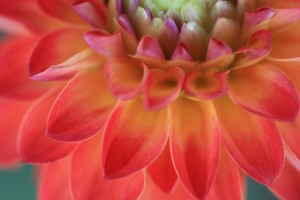What a sight for sore eyes – flowers blossoming, leaves swaying in the wind, green everywhere. After a winter of thick snow and freezing temps, many of us can’t wait to see those classic signs of spring.
Others of us – well, we’d rather skip the flowers-blooming part and stick to the sunshine. Why? Because growing plants = pollen, and pollen = allergies. It’s a sick curse. You want to be outside, enjoying everything, but you also know the misery that will bring – itching, sneezing, coughing, eyes watering.
A Natural Treatment?
We all know the typical treatments – antihistamines, decongestants, nasal sprays, eye drops. What you might not know is that there are more natural options available to you.
In a 2013 study, patients treated with acupuncture and antihistamines reported feeling much better, and needing less medication, than those who took antihistamines alone.
The American Academy of Medical Acupuncture states that acupuncture may be “an excellent complement to routine care [for moderate allergic sinusitis], often minimizing or altogether eliminating the need for medications.”
More research is needed, but if you’re hoping to reduce your intake of traditional medications (and avoid their side effects), acupuncture may be of help to you.
What is acupuncture, anyway?
Acupuncture is a natural, effective way to treat many different conditions. It is one of the oldest healing practices in the world, and is very safe.
Acupuncture has been found useful for conditions such as addiction, stroke rehabilitation, headache, menstrual cramps, fibromyalgia, lower back pain, and asthma, among others. (And as we can see, allergies might be a good addition to that list!)
How does it work?
Practitioners of acupuncture insert sterile stainless steel needles into specific points located on or near the surface of the skin. This can alter the biomechanical or physiological conditions in the body to help heal the patient.
Our body is electric by the way our cells communicate to each other. The points where the needles are inserted are where the electrical sensitivity in our body can be treated with acupuncture. These points have been mapped out and used for centuries for the treatment of specific health ailments.
Most acupuncture points are located on or near the surface of the skin and so they are not inserted very deeply, usually 1/4th to 1-inch deep. For those who are hesitant to needles, or for children, we utilize needle-less acupuncture with electric stimulation.
What can I expect during treatment?
Acupuncture needles are thinner than most needles and are about the same width as a piece of human hair. Some people experience a rush of energy with their first treatment but most tell us that they don’t feel a thing.
Patients often experience dramatic results from the first treatment. Some patients notice immediate relief, while others feel a gradual improvement over several hours. In some cases, there may be no immediate relief during the next couple of days. Occasionally, a chronic, long-term problem will take several treatments before you notice a change or improvement.
As a procedure, acupuncture is often intimidating to those new to it. But it doesn’t have to be.
At Fletcher Chiropractic, we’d be happy to sit down with you and help you decide whether acupuncture is right for you. To schedule a free consultation with either Curtis or Kadi, please call (402) 261-5766.

